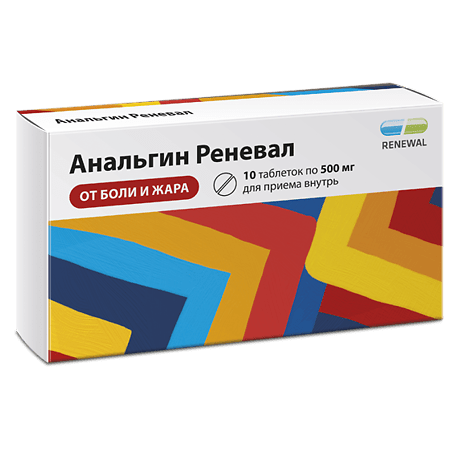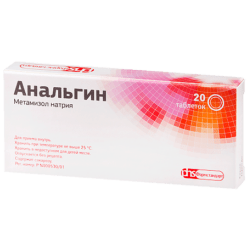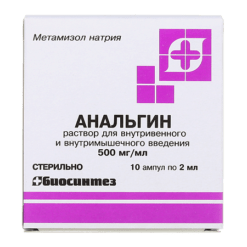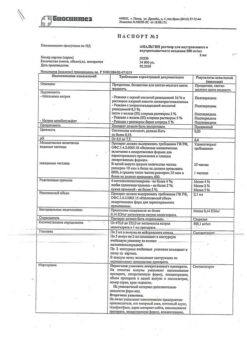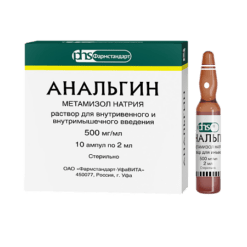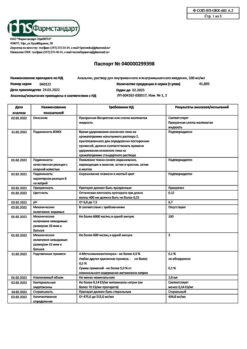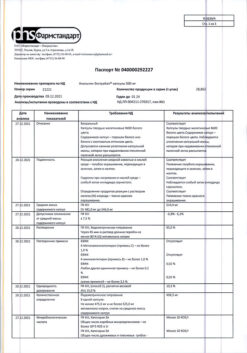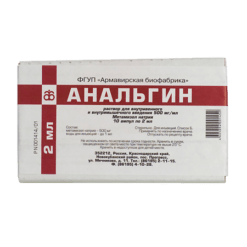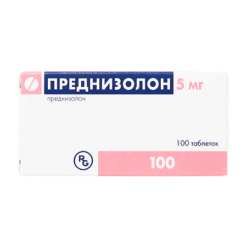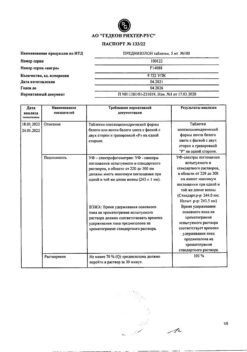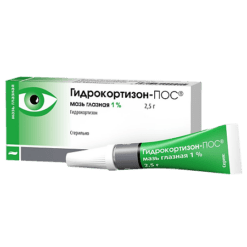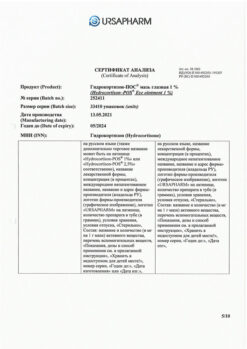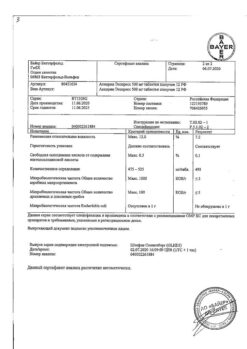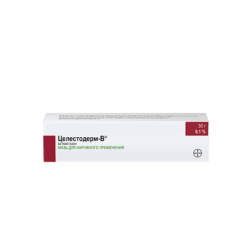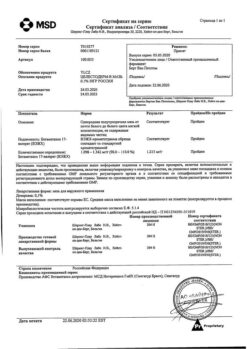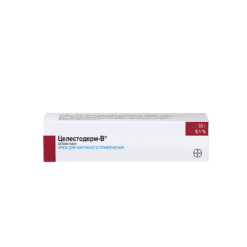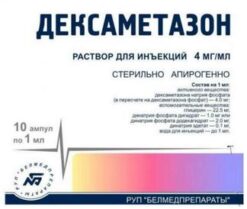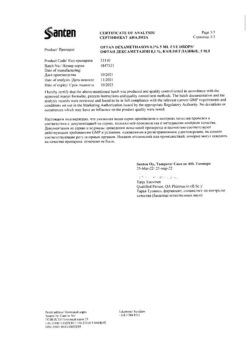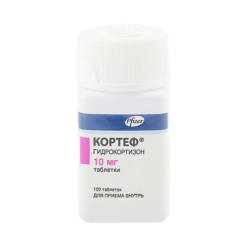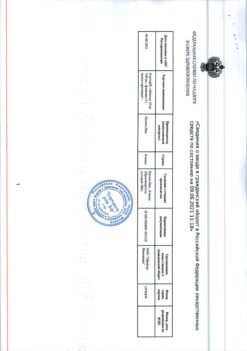No products in the cart.
Analgin Reneval, tablets 500 mg 10 pcs
€3.99 €3.55
Description Pharmacotherapeutic group: Analgesic non-narcotic Pharmacokinetics:
ATX: N.02.B.B.02 Sodium Metamizole
Pharmacodynamics:
Sodium Metamizole is a non-narcotic analgesic, pyrazolone derivative, non-seliquely blocks cyclooxygenase and reduces prostaglandin formation from arachidonic acid.
Inhibits conduction of pain extra- and proprioreceptive impulses along the Goll and Bourdach bundles, increases the threshold of excitability of thalamic centers of pain sensitivity, increases heat release.
The distinctive feature is the slight anti-inflammatory effect, causing a weak effect on the water-salt metabolism (retention of sodium and water ions) and the mucous membrane of the gastrointestinal tract. It has analgesic, antipyretic and some antispasmodic (against the smooth muscle of the urinary and biliary tracts) effects. The action develops 20-40 minutes after taking the drug and reaches a maximum in 2 hours.
Maximum plasma concentration is reached 1-1.5 h after oral administration. In the intestinal wall it is hydrolyzed to form the active metabolite. There is no unchanged sodium metamizole in blood. The binding of the active metabolite to proteins is 50-60%. Excretion of metabolites is via the kidneys. In addition, metabolites are excreted with breast milk.
.
Indications
Indications
Feverish syndrome in infectious and inflammatory diseases, insect bites, post-transfusion complications.
Pain syndrome (mild to moderate severity): incl. neuralgia, myalgia, biliary colic, renal colic, postoperative pain syndrome, headache, toothache, algodismenorrhea.
Pharmacological effect
Pharmacological effect
Pharmacotherapeutic group: Analgesic non-narcotic drug
ATC: N.02.B.B.02 Metamizole sodium
Pharmacodynamics:
Metamizole sodium is a non-narcotic analgesic, a pyrazolone derivative, that non-selectively blocks cyclooxygenase and reduces the formation of prostaglandins from arachidonic acid.
It prevents the conduction of painful extra- and proprioceptive impulses along the Gaulle and Burdach bundles, increases the threshold of excitability of the thalamic centers of pain sensitivity, and increases heat transfer.
A distinctive feature is the insignificant anti-inflammatory effect, which causes a weak effect on water-salt metabolism (retention of sodium and water ions) and the mucous membrane of the gastrointestinal tract. It has an analgesic, antipyretic and some antispasmodic (in relation to the smooth muscles of the urinary and biliary tract) effect. The effect develops 20-40 minutes after taking the drug and reaches a maximum after 2 hours.
Pharmacokinetics:
Maximum plasma concentration is achieved 1-1.5 hours after oral administration. In the intestinal wall it is hydrolyzed to form an active metabolite. There is no unchanged metamizole sodium in the blood. The binding of the active metabolite to proteins is 50-60%. Excretion of metabolites occurs through the kidneys. In addition, metabolites are excreted in breast milk.
Special instructions
Special instructions
When treating patients receiving cytotoxic drugs, metamizole sodium should only be taken under medical supervision.
Patients with atopic bronchial asthma and hay fever have an increased risk of developing allergic reactions.
While taking metamizole sodium, agranulocytosis may develop, and therefore, if an unmotivated rise in temperature, chills, sore throat, difficulty swallowing, stomatitis is detected, as well as with the development of vaginitis or proctitis, immediate discontinuation of the drug is necessary.
With long-term use, it is necessary to monitor the peripheral blood picture.
It is not permissible to use it to relieve acute abdominal pain (until the cause is determined).
Active ingredient
Active ingredient
Metamizole sodium
Composition
Composition
Active substance:
Metamizole sodium – 0.5 g,
Excipients:
potato starch – 0.0334 g,
sucrose (sugar) – 0.0055 g,
calcium stearate – 0.0028 g,
stearic acid – 0.0028 g,
talc – 0.0055 g.
Pregnancy
Pregnancy
Contraindicated.
Contraindications
Contraindications
Hypersensitivity to the components of the drug, inhibition of hematopoiesis (agranulocytosis, cytostatic or infectious neutropenia), liver and/or renal failure, hereditary hemolytic anemia associated with deficiency of glucose-6-phosphate dehydrogenase, sucrase/isomaltase deficiency, fructose intolerance, glucose-galactose malabsorption, bronchial asthma induced by intake acetylsalicylic acid, salicylates or other non-steroidal anti-inflammatory drugs, anemia, leukopenia, pregnancy, lactation, age under 8 years.
With caution:
Kidney diseases (pyelonephritis, glomerulonephritis, including a history), alcoholism, predisposition to the development of arterial hypotension.
Side Effects
Side Effects
From the urinary system: impaired renal function, oliguria, anuria, proteinuria, interstitial nephritis, red staining of urine.
Allergic reactions: urticaria (including on the conjunctiva and mucous membranes of the nasopharynx), angioedema, malignant exudative erythema (Stevens-Johnson syndrome), toxic epidermal necrolysis (Lyell’s syndrome), bronchospastic syndrome, anaphylactic shock.
From the hematopoietic organs: agranulocytosis, leukopenia, thrombocytopenia.
Other: lowering blood pressure.
Interaction
Interaction
Radiocontrast drugs, colloidal blood substitutes and penicillin should not be used during treatment with metamizole sodium. With simultaneous use of cyclosporine, the concentration of the latter in the blood decreases.
Metamizole sodium, displacing oral hypoglycemic drugs, indirect anticoagulants, glucocorticosteroids and indomethacin from binding to plasma proteins, increases their activity.
Phenylbutazone, barbiturates and other inducers of microsomal liver enzymes, when used simultaneously, reduce the effectiveness of metamizole sodium.
Concomitant use with other non-narcotic analgesics, tricyclic antidepressants, contraceptive hormonal drugs and allopurinol may lead to increased toxicity.
Metamizole sodium enhances the effects of ethanol; simultaneous use with chlorpromazine or phenothiazine can lead to the development of severe hyperthermia.
Sedative and anxiolytic drugs (tranquilizers) enhance the analgesic effect of metamizole sodium
Thiamazole and cytostatics increase the risk of developing leukopenia.
The effect is enhanced by codeine, H2-histamine receptor blockers and propranolol (slows down inactivation).
Myelotoxic drugs increase the manifestations of hematotoxicity of the drug.
Overdose
Overdose
Symptoms: nausea, vomiting, pain in the epigastric region, oliguria, hypothermia, decreased blood pressure, tachycardia, shortness of breath, tinnitus, drowsiness, delirium, disturbances of consciousness, acute agranulocytosis, hemorrhagic syndrome, acute renal and/or liver failure, convulsions, paralysis of the respiratory muscles.
Treatment: gastric lavage, saline laxatives, activated carbon; carrying out forced diuresis, hemodialysis, with the development of convulsive syndrome – intravenous administration of diazepam and fast-acting barbiturates.
Storage conditions
Storage conditions
In a place protected from light, at a temperature not exceeding 25 ° C.
Keep out of the reach of children.
Shelf life
Shelf life
5 years.
Do not use after expiration date.
Manufacturer
Manufacturer
Update of PFC JSC, Russia
Additional information
| Shelf life | 5 years. Do not use after the expiration date. |
|---|---|
| Conditions of storage | In the dark place at a temperature not exceeding 25 °С. Store out of the reach of children. |
| Manufacturer | Update PFC AO, Russia |
| Medication form | pills |
| Brand | Update PFC AO |
Other forms…
Related products
Buy Analgin Reneval, tablets 500 mg 10 pcs with delivery to USA, UK, Europe and over 120 other countries.

